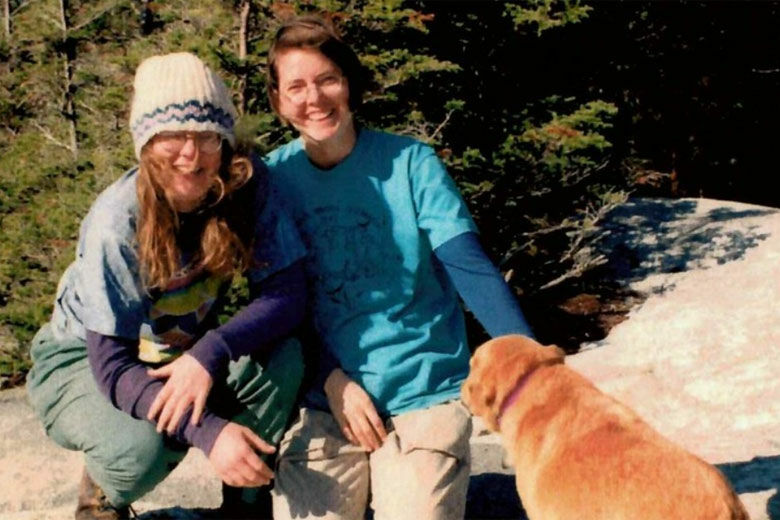
Authorities in Virginia say a convicted serial rapist from Ohio is responsible for the brutal killings of two hikers in Shenandoah National Park nearly 30 years ago — a major break in a case that had confounded investigators for years.
Recently retested DNA evidence links Walter Leo Jackson Sr., of Cleveland, to the killings of 24-year-old Julianne “Julie” Williams and 26-year-old Laura “Lollie” Winans, officials said during a news conference Thursday.
The bodies of both women were found by park rangers at their campsite near Skyland Resort on June 1, 1996, after their dog was found wandering the paths.
“Their murder sparked shock and fear throughout the community and nation,” said Richmond FBI Special Agent in Charge Stanley Meador. “We now know who is responsible for this heinous crime.”
Jackson, who authorities said was responsible for at least three other violent sexual assaults, died in prison in 2018 while serving a sentence for kidnapping and rape in Cleveland.
A residential painter by trade, Jackson was an “avid hiker with past interests and travel to Shenandoah National Park,” Meador said.

U.S. Attorney for the Western District of Virginia Christopher Kavanaugh said Jackson is the sole suspect in the killings.
In 2004, another man was indicted in the killings, but charges were dropped after prosecutors acknowledged his DNA did not match evidence recovered from the crime scene.
Speaking Thursday, Kavanaugh said bluntly, “That case was not built on forensic evidence.”
How the break in the case happened
The Richmond FBI office began taking a fresh look at the case in 2021, Meador said. Investigators combed through everything in the case file, reexamining evidence, photos and interviews. Considering advancements in DNA technology, the team spent “countless hours” determining what pieces of evidence could be retested, he said.
The office then secured funding through the U.S. Department of Justice’s Sexual Assault Kit initiative, which is administered through the Virginia Attorney General’s Office.
DNA pulled from some of the evidence was eventually uploaded into CODIS, the national database run by the FBI containing DNA profiles of known offenders — and it yielded a match to Jackson.
“That’s just a lead,” Meador said. Investigators still needed confirmation.
That came when they compared the DNA from the crime scene directly with Jackson’s DNA from what’s known as a buccal swab — a swab of a Q-tip from the inside of the cheek — that the Cuyahoga County prosecutor’s office still had on file in Ohio.
Kavanaugh, the federal prosecutor, said the DNA evidence is an ironclad link — with a one out of 2.6 trillion chance that it came from someone other than Jackson.
“I’ve prosecuted many homicides and cold cases and I have never witnessed statistics that high,” he said.
Based on the reexamination of the forensic evidence, authorities said they can also now conclusively say that Williams and Winans were sexually assaulted before they were killed.
If Jackson were still alive, he would be charged with first-degree murder and aggravated sexual abuse, Kavanaugh said.
“In light of the evidence, I firmly believe that we would be able to prove this case to a jury beyond a reasonable doubt and obtain convictions on these charges,” Kavanaugh said.
What investigators know about Jackson’s past
Authorities said Jackson violently attacked at least three other women and was in and out of prison on various charges in the years leading up to and after the Shenandoah killings.
Investigators are now piecing together Jackson’s past and seeking any information from the public that could potentially link him to other crimes.
Just days after Winans’ and Williams’ bodies were discovered in Virginia, Jackson was back in Cuyahoga County, Ohio, where he kidnapped a woman with a knife to her throat and raped her, Kavanaugh said Thursday, laying out what is known about Jackson’s criminal history. About a month later, he broke into a Cleveland-area home and raped another woman.
However, Jackson was never identified as a suspect in those attacks and remained at large, according to Kavanaugh, the federal prosecutor.
Finally, in 2011, Jackson was arrested after police said he picked up an 18-year-old woman in Cleveland in his 1979 Ford Econoline van, abducted her and raped her, before she escaped still bound, gagged and naked, according to a report in the Cleveland Plain Dealer at the time.
He pleaded guilty to several charges in that case and while serving his sentence, he was forensically linked to those earlier 1996 assaults in the Cleveland area, Kavanaugh said.
A haunting crime
At the news conference Thursday, Meador acknowledged the long, painful wait for answers for the families of the two young women.
“We can’t imagine how extremely hard it is for the family members to receive this information,” he said. “They’ve been seeking answers for far too long.”
The women, who were a couple, according to media reports at the time, were experienced hikers who met through a group providing outdoor adventure and educational programs for women, Kavanaugh said.
Winans, who grew up in Grosse Pointe, Michigan, was involved in environmental issues and was a student at Unity College in Maine at the time.
Williams, who was from St. Cloud, Minnesota, had a degree in geology.
The two women entered the park on May 19 for a hiking trip, and were last seen alive by park personnel on May 24. Their bodies were found on June 1 after the couple’s dog, Taj, was found wandering park paths. The women’s nude bodies were found bound and gagged and their throats had been cut.
There had been speculation over the years that the killer may have targeted the women because of their sexual orientation. Kavanaugh said investigators could not find any evidence to support that. But he added, “Make no mistake, this crime was brutal. This crime was definitionally hateful.”









